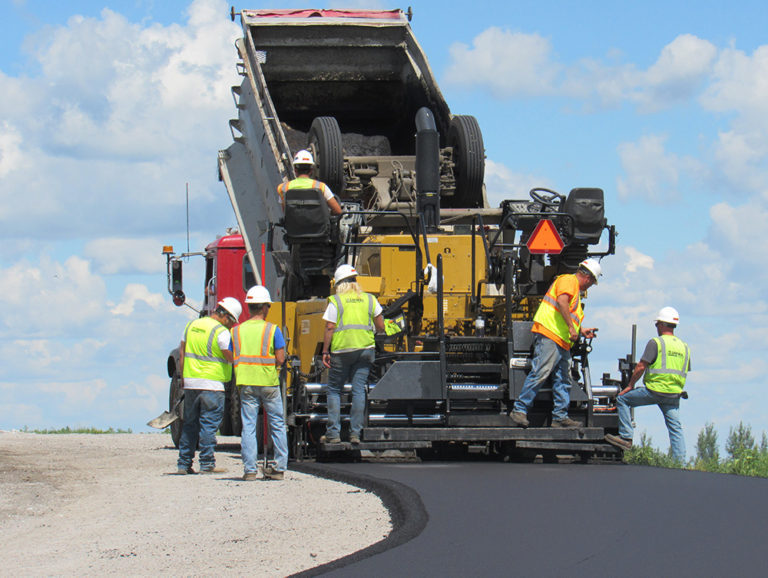While there’s been growing investment in infrastructure and construction jobs in recent years, a labor shortage continues to plague the construction industry. An estimated 546,000 additional workers are needed on top of the normal pace for hiring to meet the demand for construction labor in 2023, according to Associated Builders and Contractors (ABC).
A key driver of this decreasing workforce is the aging out of older construction workers. With nearly a quarter of construction workers older than 55, it means more and more experienced workers will retire over the next few years. The industry has also faced challenges in attracting younger workers due to rising wages in similar fields including transportation and warehousing that offer better working conditions.
But that doesn’t have to be the case. Construction leaders who have invested in robust safety and wellness programs have seen dramatic shifts in worker satisfaction and retention. These programs are foundational to establishing a culture of care and fostering a positive relationship between leadership and workers. When workers feel like their employer cares for them and has their best interests in mind, they’re more likely to perform better and have higher job satisfaction. This in turn helps employers retain and recruit top talent.
Three Key Components of a Modern Approach to Recruitment and Retention
To combat the labor shortage, it’s important that employers offer wellness programs that focus on creating a healthy environment that supports employee wellbeing. These programs should take a holistic approach and be tailored to focus on the physical, behavioral and environmental wellbeing of the population. Effective approaches to wellness and safety support the efforts of reducing injury rates, impacting absenteeism and improved retention of trade workers. The concept is no longer theoretical—it’s a proven method, and these three key components positively impact recruitment and retention:
Safety and prevention: Safety is certainly a focus on every construction site, but it needs to be more than just a check of the box and baseline safety requirements. Workers want to know that leadership cares about their safety, and that comes in the form of continuous improvement of safety and injury prevention.
Whether it’s introducing new personal protection equipment (PPE) or new technology and machinery that improve safety, these types of investments show workers that leadership is being proactive when it comes to their safety.
Another component is injury prevention. Bringing professionals like athletic trainers, EMTs or occupational health nurses onto the worksite is a proven way to reduce injuries before they happen and help workers perform at their best. Through strengthening and stretching exercises or targeted condition interventions, these providers can help workers perform more efficiently, gain productivity and improve morale.
Access to quality health and wellness resources: Members of today’s modern workforce want employers to value and prioritize their wellbeing. On a construction site, wellbeing involves both physical and behavioral health. Wellness programs that provide education and support around health—like nutrition counseling, ergonomics assessments or behavioral health chats—keep workers engaged in their personal health and help to create a culture of care that sets everyone up for success.
Bringing a wellness cart onsite throughout the day is another way to get workers away from their stations for a bit and take a short break for their mental health. Wellness carts provide the opportunity to remind workers about the importance of hydration and adequate sleep for their energy and performance. The cart is also an entry point for onsite care providers to check in with workers about anything bothering them—physically or mentally—and share healthy tips or advice. Providing these resources equips workers with the tools they need to stay healthy and work at a high level.
Environmental wellness: Workers are more motivated to show up to work when the environment in which they’re spending eight to 10 hours a day is a welcoming place. Environmental wellness is about making worksites more comfortable for workers and more conducive to wellbeing. Some approaches to environmental wellness include offering clean hygiene amenities, healthy food options, hydration stations and/or stretching stations. There are also lifestyle services that leaders can provide to boost environmental wellbeing like onsite haircuts, healthy food trucks or smoothie stations and preventive health screenings. Worksites have remained fairly unchanged for decades, and providing even minor upgrades or perks is an excellent way to show current and prospective workers that worksite leaders are cognizant of the changing workplace dynamic and are willing to ensure their site meets the demands of the modern workforce.
These services offer convenience and allow workers to take time to care for themselves during the workday. Making the worksite more enjoyable can help boost productivity, reduce absenteeism and increase employee retention. Simple additions like these environmental wellness initiatives show workers that leadership is willing to go above and beyond to ensure their workers are taken care of.
Building a Loyal Workforce
While all of these approaches are key to boosting retention and recruitment, the most important piece boils down to the relationship between site leadership and the worker population. Building trust leads to loyalty. Workers will want to continue working for an employer they have a strong relationship with and will be more likely to spread the word to their peers.
Showing care for employees’ health and wellbeing is the best way to build a healthy and strong relationship. It’s also the best way to boost productivity and efficiency and bring in younger, talented trade workers. Word of mouth goes a long way in the construction industry, and top trade workers want to work for employers who goes above and beyond in their approach to safety and wellness.







